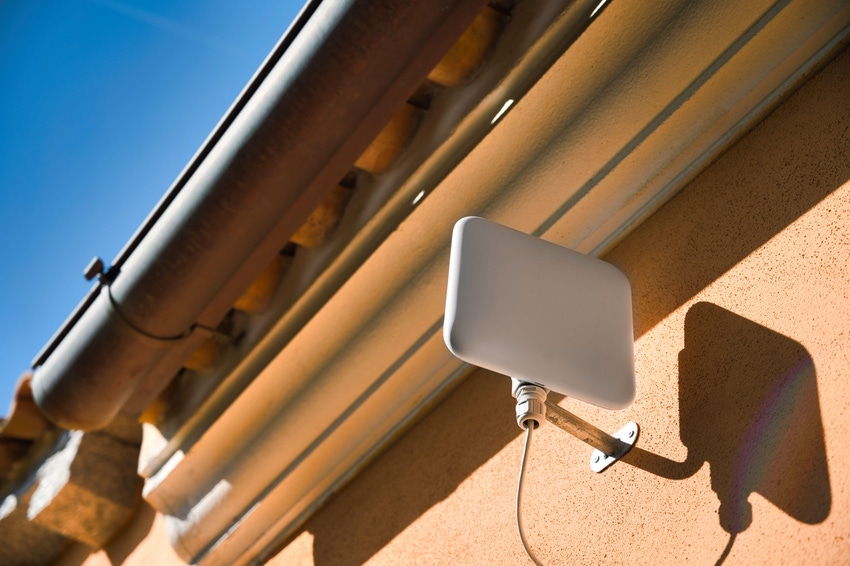FWA cheer spreads across the world
Wireless network operator executives from the US, India, Finland and elsewhere offered a mostly positive outlook on fixed wireless access (FWA) as a profitable offshoot of the 5G era.

Fixed wireless access is the slide that so many people left out of their 5G pitch decks in the early days of the technology.
But while 5G has yet to put self-driving cars on roads or equip robot surgeons with scalpels, it has opened residential broadband possibilities in markets around the world.
A panel last week at the MWC Barcelona trade show served up a global perspective on 5G FWA's advances. Short version: It's not just about T-Mobile and Verizon allowing millions of US customers to fire their cable Internet providers.
A market multiplier
"We expanded the market by offering FWA," said Aayush Bhatnagar, SVP at Jio Platforms. Selling the 5G service it markets as AirFiber, he said, let the Indian carrier profit from its mobile subscribers putting their devices on Wi- Fi at home: "FWA for us is like a service enabler."
Anna-Mari Ylihurula, SVP for corporate customers at DNA Oyj, said the Finnish carrier's addition of FWA greatly expanded its customer base – 53% of its FWA sign-ups have gone to people who were not already mobile customers.
Nene Satourou Maiga, CEO of Orange Botswana, pointed to FWA's cheaper connectivity in less dense markets.
"FTTH did not make sense," she said of fiber-to-the-home technology. "In that market, which is very low-density, it is not the best way to approach this."
(Panelists did not get into FWA's possible role in the US government's fiber-first ambitions to connect every American home to broadband.)
Orange Botswana launched 5G service in late 2022, Orange's first 5G on the continent, with FWA as part of the business plan.
"So far, we are quite happy with it," Maiga commented. "I do believe it's a futureproof solution to my market."
The one American representative on the panel offered his own vote for FWA as a complement to a flourishing fiber business.
"That unlocked a whole new use case," said Joe Russo, Verizon's chief networking executive. "It's all based on mobility first, but wherever we have additional capacity, it's a great 5G use case to leverage the power of the wireless network."
Verizon has now topped 3 million FWA subscribers, a non-trivial fraction of its 7.4 million Fios fiber-broadband subscribers.
Data caps figured heavily in a FWA discussion hosted at MWC Barcelona in 2023. Since then they've surfaced in episodes like T-Mobile's addition of a deprioritization regime for intense FWA users. But they weren't discussed at this year's MWC show.
A slice could be nice
The panel did, however, offer some insight on the potential of network slicing to help carriers cope with growing FWA traffic.
Bhatnagar gave slicing a thumbs-up, noting that Jio launched FWA as a separate slice from the standalone 5G mobile service that it inaugurated in 2022.
"We have been able to segregate demand and traffic of mobility and FWA customers," he said. "It will be possible to scale the service."
Verizon's rollout of standalone 5G has hit repeated snags, but Russo said slicing would provide Verizon new options to "manage capacity in the network."
Millimeter-wave frequencies also got an endorsement as a tool carriers can use to deal with the real problem of capacity constraints.
"For sub-6, those networks are getting very congested between FWA and mobile users," observed Sandy Motley, Nokia's president for fixed networks.
"We see millimeter wave as a capacity layer over sub-6," Bhatnagar said. "We have seen very encouraging results."
Verizon's early backing of mmWave hasn't yielded much coverage, but Russo called it "a great tool to have in the toolbox" to address localized high data volumes.
The panelists all agreed that with fiber buildout not getting any cheaper – as Motley said, "it gets very expensive, as discussed, to have fiber cover 100% of your customers" – FWA's slice of the broadband business would only increase.
Panel moderator Paul Lee, a partner at Deloitte, invited speakers to forecast how many people would be connected globally via FWA in 2030.
Motley offered the lowest estimate, 250 million. Maiga, Russo, and Ylihurula each suggested the total would hit 300 million. Bhatnagar was the most bullish, throwing out 400 million – "hopefully all with Jio."
Read more about:
MWC24About the Author(s)
You May Also Like












